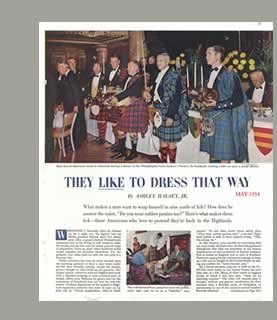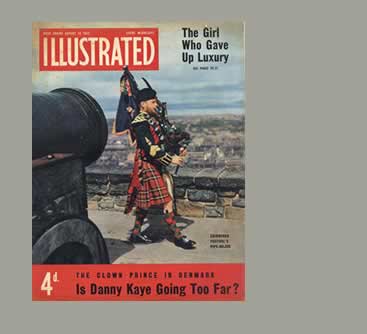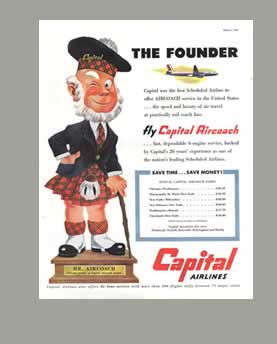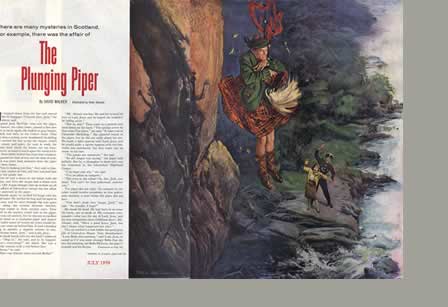This section allows me to purge
my discomfort at the sight of a Scottish man in a kilt. I noticed that
I had carefully put aside these examples for a lecture on National Stereotypes,
a socially acceptable means of venting my spleen. In my teens when should
have been out with friends, I sat seething with anger that New Year's
TV had been colonised by ranks of artifically energised Scots people
at tiny tables with a pipe band and fishing orientated novelty acts.
Every year before I left home, my parents used Hogmannay as a threshold
for Family Bonding at the prospect of a New and More Promising Year.
We sat in Gade Avenue, Watford and sang along with Andy
Stewart as he roared,
"Let the wind blow high,
Let the wind blow low,
Through
the streets in my kilt I'll go
and all the lassies say to me...
Donald where's your trousers..."
According to the
song, he was just down from the Isle of Skye and was very small and mighty
shy.
The Kilt and Sporran are vaguely amusing in single
units, but, in multiplicity the spectacle of Hogmannay was garish and
threatening. Couples threw each other round with glassy smiles, dressed
in swirling pleated skirts, and shoulder sashes, with pendulous pubic
pouches from which no objects were ever extracted. Some of the men sported
daggers in their socks withy little green fabric tabs protruding from
the fold. As celebrants, dancers, comedians and jugglers lined up to
wave at the camera during the count-down to the New Year, they inadvertently
presented to the viewer a hideous uni-sex freize of bare knees.
Don't miss the editorial feature on Americans who
celebrate their Scottish ancestry with the authentic costume and some
surprising variants. Theodore McKeldrin's ancestral tartan above (with
a six tassle sporran) has made him a happy man in Baltimore, a city
later associated with darker social issues. Theodore wears his hemline
short but the caption reassures us he is using two safety pins to ensure
decency. "The well dressed Scot, armed to meet the public, must take
care to sit in a lady-like way..." another caption addresses the concealed
anxiety that Scotsmen are prone to accusations of exposing themselves.
Peter Stevens' glorious concept of The Plunging Piper provides that point
of convergence hinted at throughout - the fear of looking up the Scotsman's
kilt.
The Kilted Jock as Brand Character, shades of Harry Lauder
with Western Electric, presents an immediately recognisable profile
beyond that provided by other national costumes (Eskimos, Mounties, Munich
Waitresses). It allows the advertiser to make claims of sensible expenditure.
"Do you believe in THRIFT?". Those with unkind prejudices about
the Scots may suspect that what is left may be spent on vast amounts
of whisky and beer.
It was not until John Vernon Lord's lecture on Hatching
(which should have been broadcast to every household instead of Hogmannay)
that I encountered Tartans again and realised the formal complexity of
hatching and cross-hatching as applied to the decoration and ientification
of the Human Body.
 GALLERY TWO GALLERY TWO
 MAINLY SATIRE MAINLY SATIRE
two caricatures

  ...GEORGE IV ADOPTS A KILT ON HIS VISIT TO SCOTLAND IN 1822. It was too short and revealed his pink tights. ...GEORGE IV ADOPTS A KILT ON HIS VISIT TO SCOTLAND IN 1822. It was too short and revealed his pink tights.

A GATHERING OF THE CLANS C 1948 
SHEET MUSIC THE HIGHLAND SWING |





























